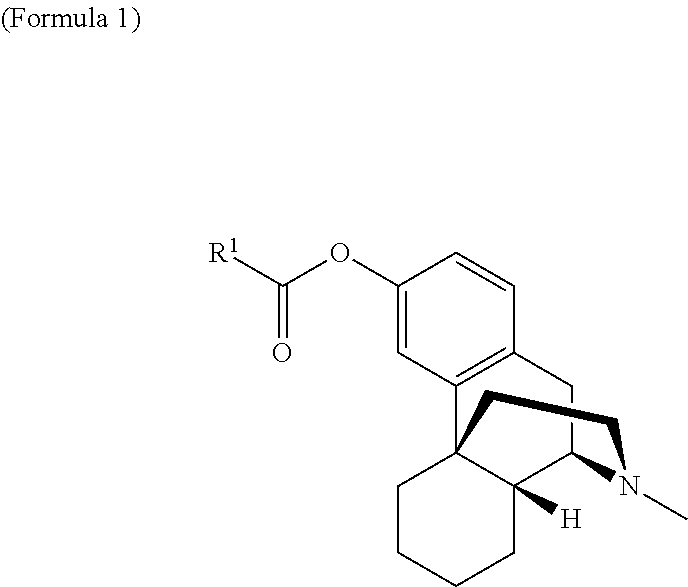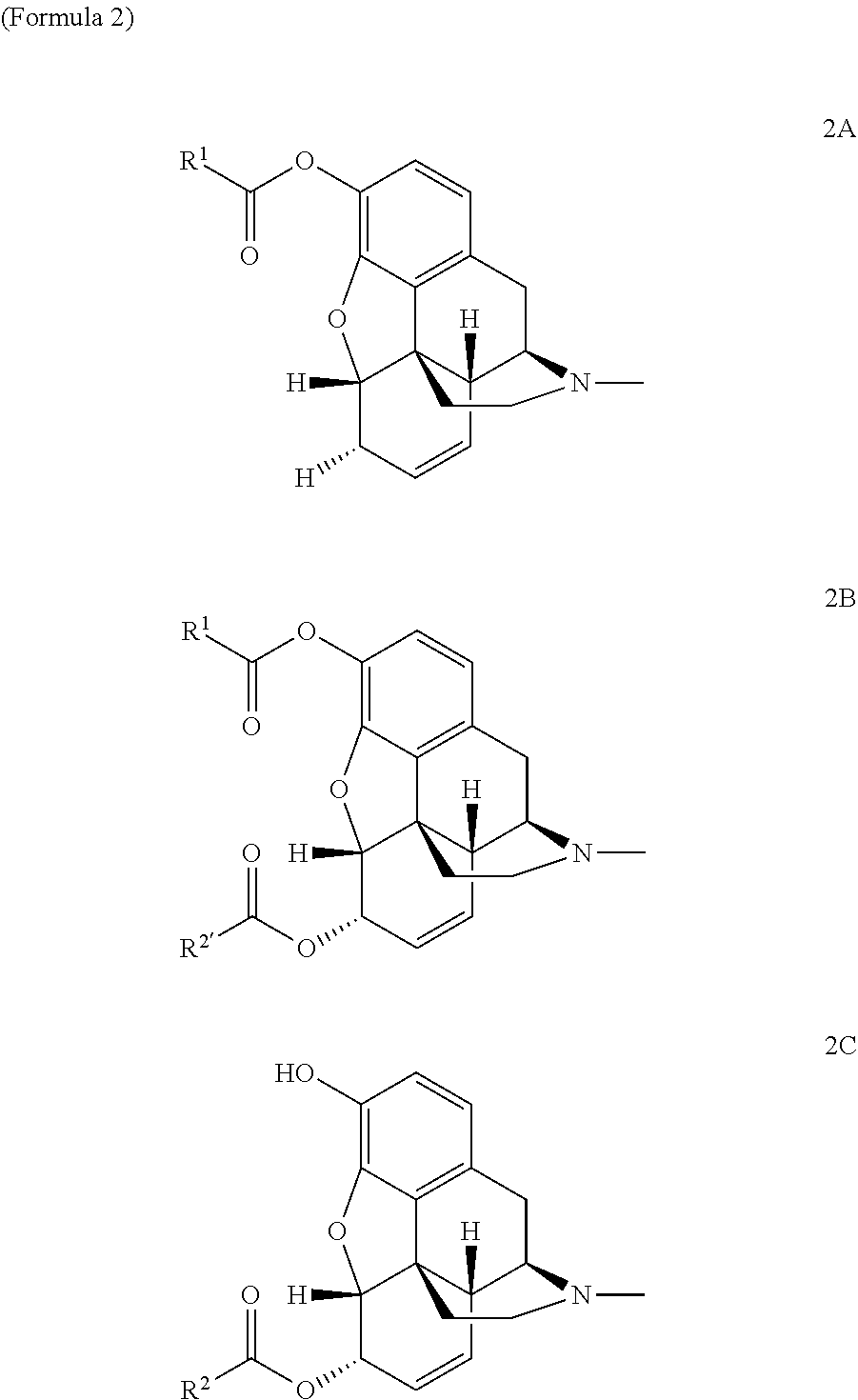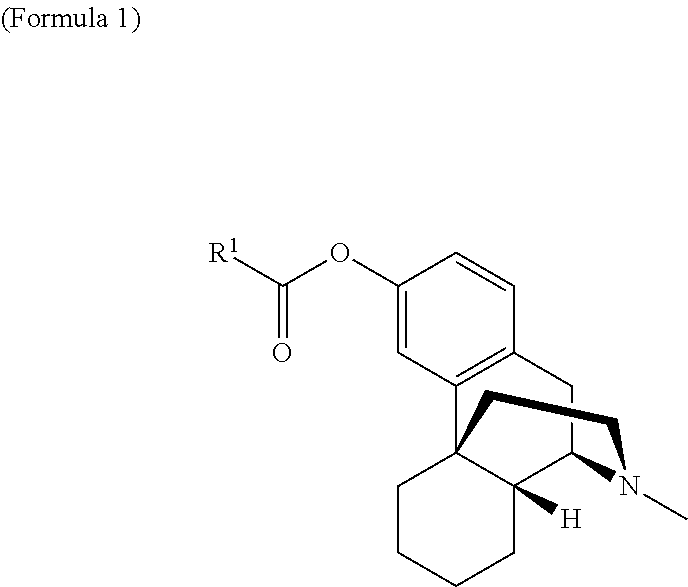Abuse-resistant long-acting release opioid prodrugs
a long-acting, opioid technology, applied in the field of abuse-resistant products, can solve the problems of limited success in developing abuse-deterrent opioid products, heavy social and economic costs, and inability to reduce the abuse potential of opioids, so as to reduce the likelihood of abuse of a controlled substan
- Summary
- Abstract
- Description
- Claims
- Application Information
AI Technical Summary
Benefits of technology
Problems solved by technology
Method used
Image
Examples
example 1
of Levorphanol Ester Prodrugs
[0094]
Exemplary procedure for preparing levorphanol palmitic (n=14) esters. Fatty acid (palmitic acid) and sulfonyl chloride (>10 mol eq) were added in a dry round bottom flask. The mixture was refluxed for 2 hours at 85° C. in an oil bath. The liquid sulfonyl chloride was removed under vacuum using a rotavap and further using an oil pump. Anhydrous CH2Cl2 was added into the mixture. The added solvent was then removed under vacuum using a rotavap and further using an oil pump. The steps of adding and removing of anhydrous CH2CH2 were repeated three times to ensure the residual sulfonyl chloride was removed. The obtained light yellow crystal was used for next reaction without further purification.
[0095]Levorphanol tartrate salt (1.0 mol eq) and triethylamine (4.0 mol eq) were dissolved in anhydrous CH2Cl2 in a round bottom flask. The flask was kept in an ice water bath. Fatty acid chloride (palmitic acid chloride) (1.1 mol eq) prepared above was added int...
example 2
of Morphine Ester Prodrugs
[0102]
[0103]Following the procedure described in Example 1, using morphine chloride salt instead,
[0104]Compound Nos. 5-8, morphine monoesters with n=12, 14, 16, and 20, respectively, are prepared. Morphine diesters can also be prepared via similar methods, except that 2 equivalents or more of the acyl chloride are used. The other monoester can also be prepared similarly, although a protection / deprotection process may be used to enhance the reaction yield.
example 3
Study Under Tampering Conditions
[0105]The prodrugs are subjected to common tampering condition, including 1.0M baking soda (pH=8.3), vinegar (5% acetic acid, pH=2.5), and Vodka (40% alcohol) at 80° C., and chlorine and hydrogen peroxide at 25° C. The final incubation mixture contains 10 μM test compound in a final volume of 0.5 mL tampering medium. The prodrug is added to initiate the incubation. At 0, 30, and 60 minutes, 0.05 mL aliquots is removed from the incubation mixtures and quenched with 0.15 mL of methanol and placed on ice. Aliquot is taken out for analysis. The concentration of both prodrug and parent drug is analyzed by LC-MS / MS to compare the stability of prodrugs.
PUM
| Property | Measurement | Unit |
|---|---|---|
| time | aaaaa | aaaaa |
| time | aaaaa | aaaaa |
| time | aaaaa | aaaaa |
Abstract
Description
Claims
Application Information
 Login to View More
Login to View More - R&D
- Intellectual Property
- Life Sciences
- Materials
- Tech Scout
- Unparalleled Data Quality
- Higher Quality Content
- 60% Fewer Hallucinations
Browse by: Latest US Patents, China's latest patents, Technical Efficacy Thesaurus, Application Domain, Technology Topic, Popular Technical Reports.
© 2025 PatSnap. All rights reserved.Legal|Privacy policy|Modern Slavery Act Transparency Statement|Sitemap|About US| Contact US: help@patsnap.com



